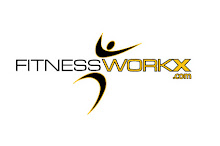Monday, November 29, 2010
Avoid the Holiday Pitfalls

Don't Make this Holiday Season Your Worst...
The holidays are without a doubt the toughest time of the year for fitness training. 'Tis the season for holiday feasts, a calendar packed with holiday parties, and foul weather all of which can diminish our motivation to train. In November and December we're faced with every temptation imaginable, which makes it difficult to maintain peak fitness. But here are 3 simple strategies we can do to keep ourselves on track.
Don't Skip Meals...
Too many of us think that saving ourselves for the big meals will keep us from eating too much, but usually the opposite is always the case. Not only do frequent meals increase our metabolism but we are much less likely to binge when we reach the dinner table.
Water, Water, and More Water...
We should all aim for at least 90 ounces of water a day. Not only will this keeps us properly hydrated, but will also help us digest those holiday meals. If you plan on having adult beverages, try to match each drink with one glass of water.
Stay Active...
Why not use those delicious holiday foods as recovery from an intense workout? All those precious carbohydrates found in starchy holiday dishes like mashed potatoes, or sugars found in cranberry sauce or pumpkin pie are excellent for glycogen replenishment. And the protein you'll get from that holiday turkey meal will help repair damaged tissue. Plus, our metabolism is more active after exercise, which will help us burn those little "indulgences" that may otherwise pack on the unwanted weight for upcoming training.
Monday, November 15, 2010
Friday, November 5, 2010
Monday, November 1, 2010
The Joy of Kettlebells
Subscribe to:
Comments (Atom)
